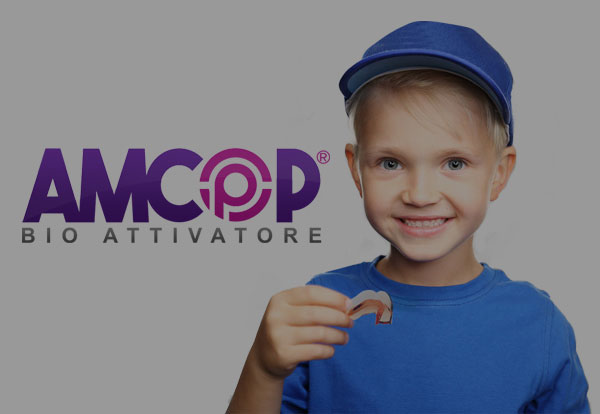A strategic moment that will determine a large part of the “strength” of the individual's health is represented by birth; in fact, under the gentle but generalized thrust of liquid pressures, the cranial sphere - a real membranous, cartilaginous "balloon" - will expand and naturally find a more spherical shape. The deformations, the asymmetries recorded at birth must naturally evolve towards a harmony of shapes in the following weeks. In fact, after birth, the skull turns out to be like a deformable puzzle, that is, a highly elastic and modelable structure thanks to the presence of the cranial sutures not yet ossified. At the end of an ideal skull modeling phase, the result will be a skull with a shape similar to that of a balloon, which houses vital organs such as the brain and the main structures of the central nervous system, as well as the entire visual and acoustic apparatus and balance. A child's skull must be in optimal condition during development to keep posture in balance, as the head can be thought of as a pendulum that has its center of gravity and influences the posture of the whole body. The occipital bone and the sphenoid joint in mutual articulation, Synchondrosis-Spheno-Basar (SSB), constitute the supporting axis of the skull base. It should be considered that the position of the mouth and head is a component of the postural structure. Any misalignment of the head creates disharmonies and tension asymmetries of the neck muscles, of varying degrees in relation to the type of deviation.
We can therefore affirm that posture arises in the skull and from the skull and, therefore, from the dental arches and that it is absolutely essential to evaluate the occlusal function on the basis of cranial asymmetries. If the skull is not symmetrical, in fact, the jaw is not symmetrical and everything is out of balance. Therefore, before restoring a mandible, it is necessary to restore the skull C0 (Occiput) on the spine, C1-C2 on C3, since the hinge axis of the mouth, the true one, is that of the cervical.
In the orthodontic and dental fields, until recently, these connections between the skull, dental arches and posture were not taken into consideration in the context of a systemic and global treatment of the patient. Today more than ever, however, it becomes important to propose innovative and more complete therapies, which allow patient care not only to obtain a good aesthetic result, but above all for the resolution of a series of problems. Ultimately, in orthodontics it is important to treat the skull especially in children with a preventive, interceptive action.
The devices that must be used will be functional orthodontic appliances - such as our elastic activator produced in Bari - which modify the craniomandibular relationships of the individual and, consequently, the postural balance, since their action is necessarily functional-occlusal, temporomandibular and postural.
The dentist, therefore, must consider himself as the architect of the skull who must preserve or rediscover the mandibular relationship, the true postural basis, since - as already mentioned - the posture is summarized in a balanced skull in space with respect to an orthogonal reference through the restoration of a correct occlusion. The aim is to reposition the individual straight in his gravity through a suitable occlusal treatment.
Dento-craniofacial orthopedics therefore means the correct growth and positioning of the facial skeleton in perfect joint balance (TMJ) and neuro-muscular reconditioning. This balance eliminates any negative interference capable of altering this growth correctly, that is, all those distortions that would manifest themselves in the form of a dento-skeletal malocclusion.
This type of dento-craniofacial orthopedics, therefore, is aimed at correcting the deformations of the bony structures of the cranial massif. The different types of dento-craniofacial decompensation with relative discrepancies can be determined by problems, most of the time, of an osteopathic nature.
The evaluation of the decompensation of the craniofacial bone structures in the presence of a malocclusion must not be framed in a problem limited only to the two maxillaries (upper dental arch and lower mandibular arch), but in a more global framework, in which the malocclusion could be the result of a cranial problem, capable of unbalancing the relationship between the arches themselves.
In addition to the dental arches and the craniofacial bone structures, all the muscular structures must be taken into consideration and in particular, the tongue, the craniomandibular muscles and the joints.
Therapy should be started as early as possible to achieve adequate "chewing function".
To achieve this, it is therefore necessary to use functional orthopedic devices that modify the skeletal structure of the craniofacial system and the mandibular posture in a therapeutic sense, improving the function and shape of the skeletal structures that make up the stomatognathic system.

CONCLUSIONS
The AMCOP Bio-Activators, elastic functional orthodontic devices made in Bari, with their plastic characteristic allow the creation of this type of highly specific orthopedics and perform an action of harmonization and remodeling of the dento - skull - facial structures, rebalancing the neuro-muscular system and placing the teeth in a correct relationship with the bone bases and, therefore, with the skull, the temporomandibular joints (TMJ) and the cervical spine and, more specifically, with the craniosacral system (posture). The devices, therefore, can be considered real arch harmonizers and, through the plastic effect, allow a true expansive and growth stimulation of the maxillary and mandibular skeletal bases and, at the same time, orient the exchange of the teeth in a correct relationship with the bone bases in a suitable occlusal balance.


